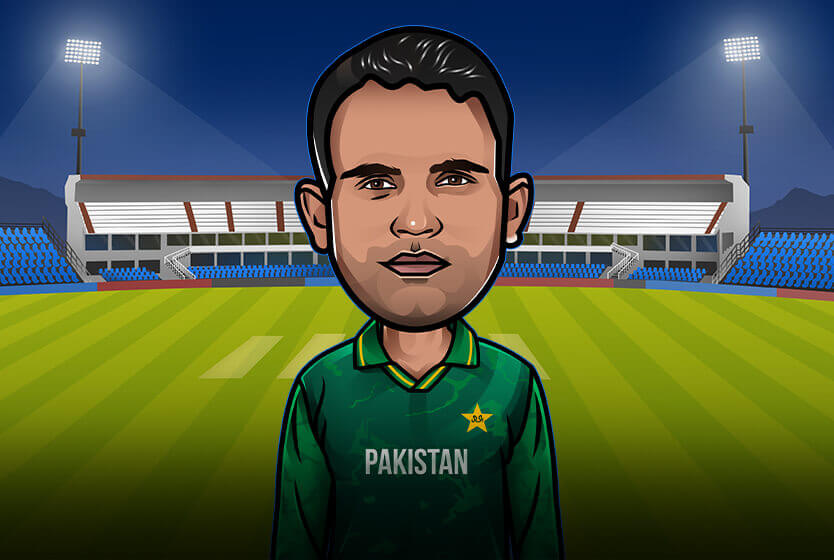
Fakhar Zaman and the Puzzle of Pakistan’s T20I Top 3
With the Babar-Rizwan duo settled as openers, Fakhar Zaman is Pakistan’s default #3. But is that the right solution?
The best batter of PSL 2022, the highest run-getter in a single edition of the PSL, Fakhar Zaman, doesn’t get to open the innings in the T20 internationals. Unable to understand why?
Although it might not come as a surprise for those who have closely followed the trajectory of his T20I career, the question arises, ‘Is Number 3 really his ideal batting position in the current Pakistan team set-up?’
To start with, It is very important to know why exactly he was made to bat in the middle order in the National team. For that purpose, we divide his T20I career into three phases.
- From his debut to 8 July 2018, Fakhar Zaman batted in 21 innings for Pakistan, out of which 19 came while opening the innings. Fakhar accumulated 646 runs at a decent average of 30.8 and an exciting strike rate of 143.6. It was all going great until this point, but what led to him moving down the batting order can be explained from the 2nd phase of his career.
- Between 24 October 2018 and 10 November 2020, Fakhar only managed 192 runs from 17 innings at an average of just 11.3 and a poor strike rate of 109.7. All these innings came while opening the batting. Right after the Australia series in 2019, Fakhar was left out of the squad for the Bangladesh series but was brought back for the England tour in 2020 due to no real availability of quality openers.
The next mission was to tour New Zealand amidst the pandemic. Unfortunately, Fakhar fell ill and missed out on the tour just days before he could board the flight to the island. It was a tour of great significance in the sense that it resulted in the emergence of Rizwan, the T20I opener. The selectors trusted Rizwan to accompany Babar in the next home series against South Africa, thus leaving Fakhar out of the squad.
The series was followed by the first leg of PSL 2021, where Fakhar had a great run of form in the few games he played. He got called up for the National team. Unfortunately for him, by that time, Rizwan had earned the only available opening slot. Thus, he was made to bat in the middle order.
- Let’s move towards the third phase. From 10 April 2021 to date, Fakhar scored 415 runs at an average of 23.1 and batting strike rate of 126.9 from the 21 innings; 15 of those came while batting at 3, while the other came in the middle order. Although his stats wouldn’t make anyone believe that he did his job to the fullest, he was, by far, the highest run-getter in that period for batting positions 3-5 for Pakistan, while he was almost at par with the average batting average of 22.3 and strike rate of 128.4 at these batting positions.
Most Runs for Pakistan While Batting at No. 3-5 Since 10 April 2021
| Batsman | Runs | Average | Strike Rate |
| Fakhar Zaman | 415 | 23.1 | 126.9 |
| Mohammad Hafeez | 190 | 15.8 | 131.9 |
| Haider Ali | 179 | 25.6 | 123.4 |
| Babar Azam | 153 | 51.0 | 112.5 |
| Shoaib Malik | 100 | 33.3 | 172.4 |
To summarize, Pakistan took Fakhar Zaman to the 2021 T20 World Cup as a left-hander to counter leg-spin and left-arm orthodox spin in the middle overs when he failed to make use of the Powerplay while opening the batting. But the question is, although he accumulated more than twice the runs compared to the second-best batter in this period, was he really successful in countering spin bowling in the middle overs?
In the third and final phase of his career, while he struck at 140.8 at an average of 26.4 against pace, he could only manage a batting strike rate of 113.6 and an average of 21.9 against spin. It turns out that he hasn’t been as lethal a weapon to counter spin as the team management might have thought.
We may look at it from another perspective. Since the start of 2021 in T20Is, Mohammad Rizwan has played 37 balls per innings on average, while the equivalent for Babar Azam is 30. Thus, the two openers combine to face 11/20 overs. Babar strikes at 120 against spin in international T20s, while Rizwan’s strike rate against spin since being promoted to open has been 115. Therefore, to counter opposition spinners, ideally, the batter walking in at three would take down at least two types of spin from ball one. But when the incoming man, Fakhar Zaman, will strike at 115 in his first ten balls of spin on average in T20Is, things are much tougher while chasing or setting up a big total.
We saw a reflection of this in the T20 World Cup 2021 semi-final. Fakhar arrived at the crease at the end of the 10th over. One would have expected him to move the scorecard briskly from the word go, but instead, he was on 17 (16) by the end of the 16th over, including 5 (7) against the spinners, although he covered it up quite well towards the end that day.
Now, does all this have any substance? One may argue he is still one of the better options in the middle order despite not being elite in certain skills. Well, it does. And that is primarily due to one thing, and that’s Pakistan Super League 2022. PSL 2022 was an exciting chapter of Fakhar’s career. He was not only the highest run-getter of the season but also made runs at a higher strike rate than he had done previously.
Highest Batting Strike Rate in PSL 2022 (Min 350 Runs)
| Batsman | Strike Rate | Batting |
| Fakhar Zaman | 152.7 | 45.2 |
| Alex Hales | 147.3 | 44.3 |
| Shan Masood | 138.2 | 39.8 |
| Shoaib Malik | 137.3 | 44.6 |
| Mohammad Rizwan | 126.7 | 68.2 |
Fakhar had an exciting start to his PSL career if we specifically look at his Powerplay game. In his first two seasons, he struck at 144, averaging 37.8. These two seasons ran parallel with the first phase of his T20I career, where he enjoyed great success overall. In T20I Powerplays in this period, he averaged 43.7 at a strike rate of 146. The next three PSL seasons saw a decline in his PP game as he struck at 122 at an average of 33.7. This was also the phase where he continued to struggle while opening the batting in T20Is.
Fakhar Zaman’s Powerplay Record by Each PSL Season
| Year | Strike Rate | Average |
| 2017 | 156.3 | 37 |
| 2018 | 137.5 | 38.5 |
| 2019 | 129.1 | 45.5 |
| 2020 | 132.1 | 35 |
| 2021 | 103.5 | 24.5 |
| 2022 | 150 | 63 |
In the recently concluded PSL season, Fakhar was again seen taking bowlers to cleaners in the first six overs. He had both mercilessness and longevity, a combination that had bowlers looking helpless.
Highest Powerplay SR in PSL 2022 for Locals (Min 50 Balls)
| Batsman | Strike rate | Average |
| Mohammad Haris | 187.3 | 66.5 |
| Fakhar Zaman | 150.0 | 63.0 |
| Kamran Akmal | 136.6 | 48.5 |
| Ahsan Ali | 134.8 | 37.7 |
| Shan Masood | 130.9 | 50.8 |
| Mohammad Rizwan | 130.1 | 106.0 |
One of the key features of Fakhar’s game while opening the batting is that once set, he takes on spin ferociously. While opening the batting in T20Is, he strikes at 158 at an average of 26.8 against spin. The same trend could be noticed in PSL 7, where his strike rate in the same phase against spin was 148.8, while he averaged 47.2 per wicket. Thus, it can be concluded that Fakhar not only offers Powerplay utilization against pace but also maximized run-scoring against spin in the middle overs when opening.
Let’s look at Pakistan’s current T20I openers. Since 2021, Babar has been striking at 109 in T20Is and 107 in PSL in the Powerplay. On the other hand, Rizwan strikes at 133 in the Powerplay overs of the PSL and 121 while doing the same job for Pakistan in the mentioned period. Although this opening pair has had great success for Pakistan, it is still far from ideal.
It’s time we come back to the original question. What is Fakhar Zaman’s ideal batting position in the Pakistan T20I set-up ahead of the T20 World Cup? With Babar-Rizwan proving to be a reliable opening combo, it’s understandable that most wouldn’t want to upset the combination. If it ain’t broke, don’t fix it. But there are two possible answers.
Pakistan may continue to trust their reliable opening pair and make Fakhar bat at No.3 against his natural position. Alternatively, they may trust Fakhar’s run of form in PSL 7, thus once again using him to maximize the Powerplay and also providing a potential spin-hitting option if he gets through the first six overs. This would result in Captain Babar Azam having to do the tougher role of batting at No.3. However, if that results in better Powerplay utilization and a successful solution to counter slowing down against spin in the middle overs, Pakistan and Babar might not mind the trade-off.







Leave a Reply